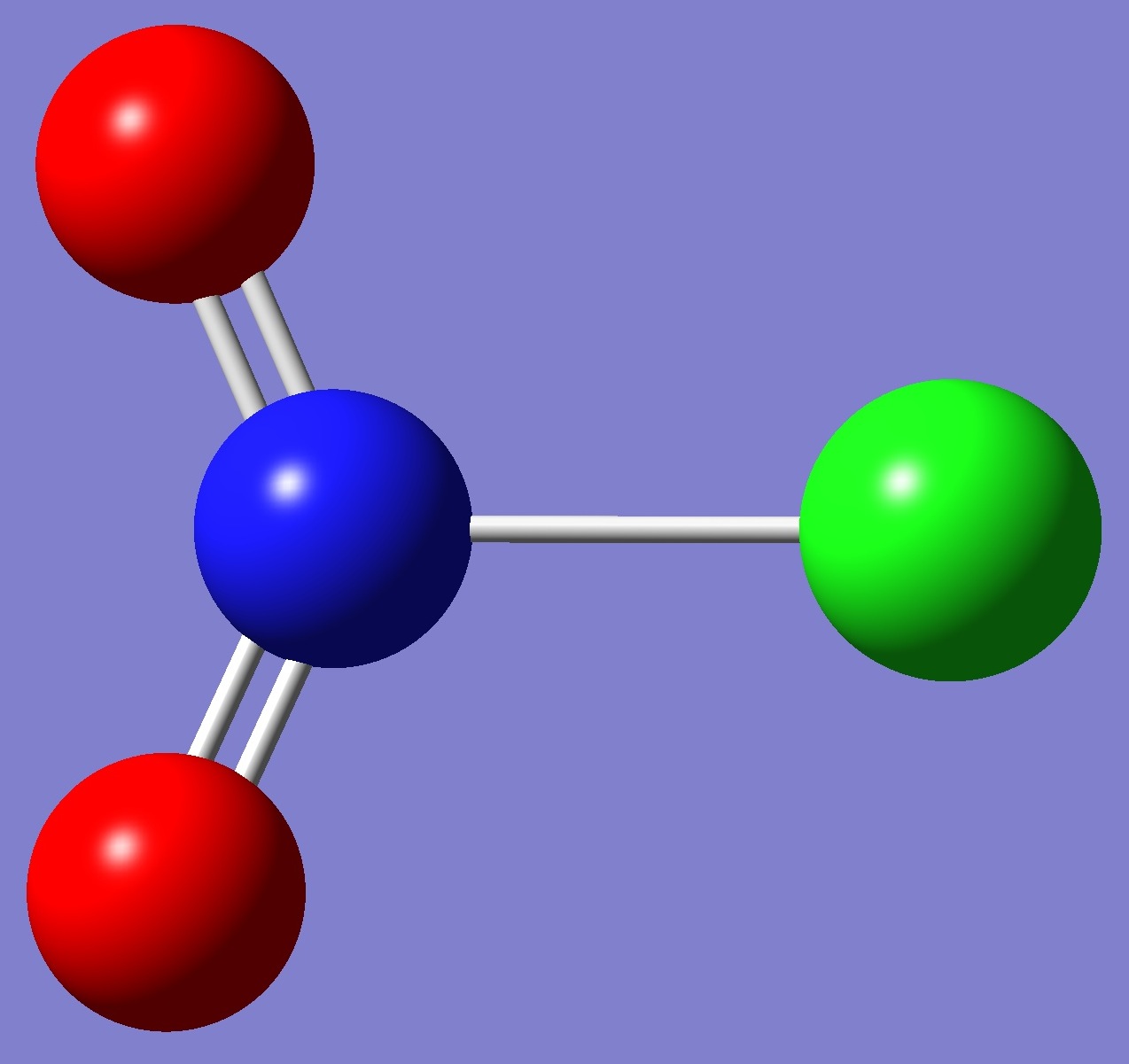|
|
|
|
|
|
|
|
|
|
|
|
|
|
|
|
|
|
|
|
|
ClNO2
|
|
|

|
|
|
|
|
|
|
|
|
|
|
|
|
|
|
|
|
|
|
|
|
|
|
|
|
|
|
|
Nitrogen
and Chlorine |
|
|
|
Nuclear
Quadrupole Coupling Constants |
|
|
|
in
Nitryl Chloride |
|
|
|
|
|
|
|
|
|
|
|
|
|
|
|
|
|
|
|
|
|
|
|
Calculations of N and Cl nqcc's in
nitryl chloride were made on the semi-experimental re
structure of Francis et al.
[1]. These are compared with the experimental nqcc's [1] in Table
1. Structure parameters are given in
Table 2. |
|
|
In Table 1, RMS is the root
mean square difference between calculated and experimental nqcc's.
RSD is the residual standard deviation of the calibration of the
model for calculation of the nqcc's. |
|
|
|
|
|
|
|
|
|
|
|
|
|
|
|
|
|
|
|
|
|
|
| |
|
|
|
|
|
|
|
|
Table 1. N and Cl
nqcc's in 35ClNO2 (MHz). Calculation was
made on the reSE structure [1]. |
|
| |
|
|
|
|
|
|
|
|
|
|
Calc. |
|
Expt. [1] |
|
|
|
|
|
|
|
|
|
|
14N |
Xaa |
|
0.473 |
|
0.5951(8) |
|
|
|
Xbb - Xcc |
- |
0.913 |
- |
0.6994(12) |
|
|
|
Xbb |
- |
0.693 |
- |
0.6472 * |
|
|
|
Xcc |
|
0.220 |
|
0.0522 * |
|
|
|
|
|
|
|
|
|
|
|
RMS |
|
0.123 (28. %) |
|
|
|
|
|
RSD |
|
0.030 (1.3 %) |
|
|
|
|
|
|
|
|
|
|
|
|
35Cl |
Xaa |
- |
95.34 |
- |
94.6628(5) |
|
|
|
Xbb - Xcc |
|
13.15 |
|
10.7754(3) |
|
|
|
Xbb |
|
54.25 |
|
52.7226 *
|
|
|
|
Xcc |
|
41.09 |
|
41.9472 *
|
|
|
|
|
|
|
|
|
|
|
|
RMS |
|
1.08 (1.7 %) |
|
|
|
|
|
RSD |
|
0.49 (1.1 %) |
|
|
|
|
|
|
|
|
|
|
|
|
|
|
|
|
|
|
|
|
|
|
|
|
* Calculated here from the
experimental Xaa and Xbb - Xcc,
and zero trace condition. |
|
|
|
|
|
|
|
|
|
|
|
|
|
|
|
|
|
|
|
|
|
|
|
|
|
|
| Table 3. Nitryl Chloride.
Molecular structure parameters (Å and degrees). |
|
|
|
|
|
|
reSE [1] |
|
|
|
|
|
|
ClN |
1.8467(2) |
|
|
NO |
1.1916(1) |
|
|
ONO |
131.78(3) |
|
|
|
|
|
|
|
|
|
|
|
|
|
|
|
|
|
|
|
|
|
|
|
|
[1] S.G.Francis, J.N.Harvey,
N.R.Walker,
A.C.Legon, J.Chem.Phys. 128,204305(2008). |
|
|
|
|
|
|
|
|
|
|
|
|
K. Endo, J.Chem.Soc.Jpn. 1979, No.9,p1129(1979).
|
|
|
|
|
|
|
|
|
|
|
|
|
|
|
|
|
|
|
|
|
|
|
ClNO |
ClPO2 |
BrNO2 |
CH2=CH(NO2) |
|
|
|
|
|
|
|
|
|
|
|
|
|
|
|
|
|
|
|
|
|
|
Table of Contents |
|
|
|
|
|
Molecules/Nitrogen |
|
|
|
|
|
Molecules/Chlorine |
|
|
|
|
|
|
|
|
|
|
|
|
|
|
|
|
|
|
|
|
|
|
|
|
|
|
|
|
|
|
ClNO2.html |
|
|
|
|
|
|
Last
Modified 21 Aug 2009 |
|
|
|
|
|
|
|
|
|
|
